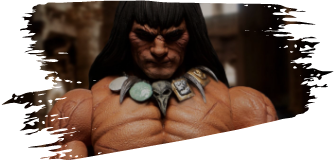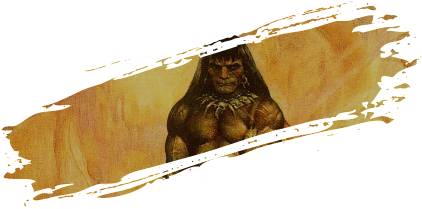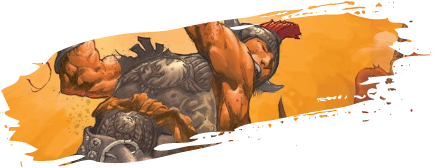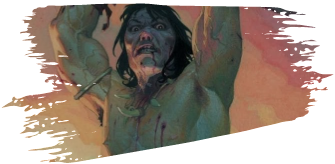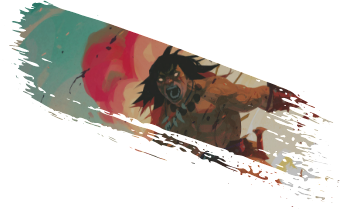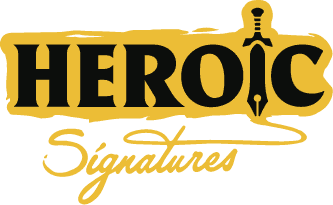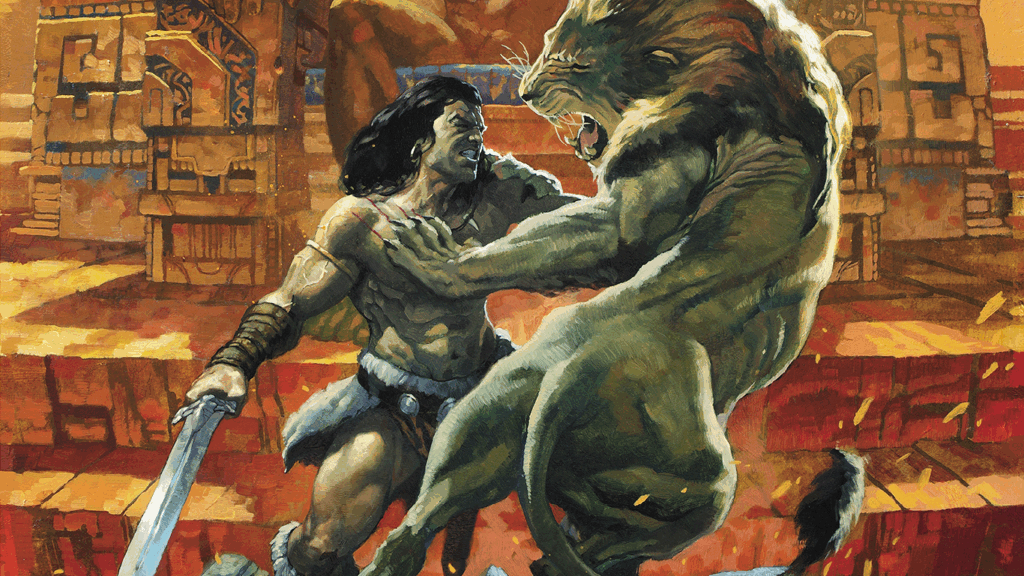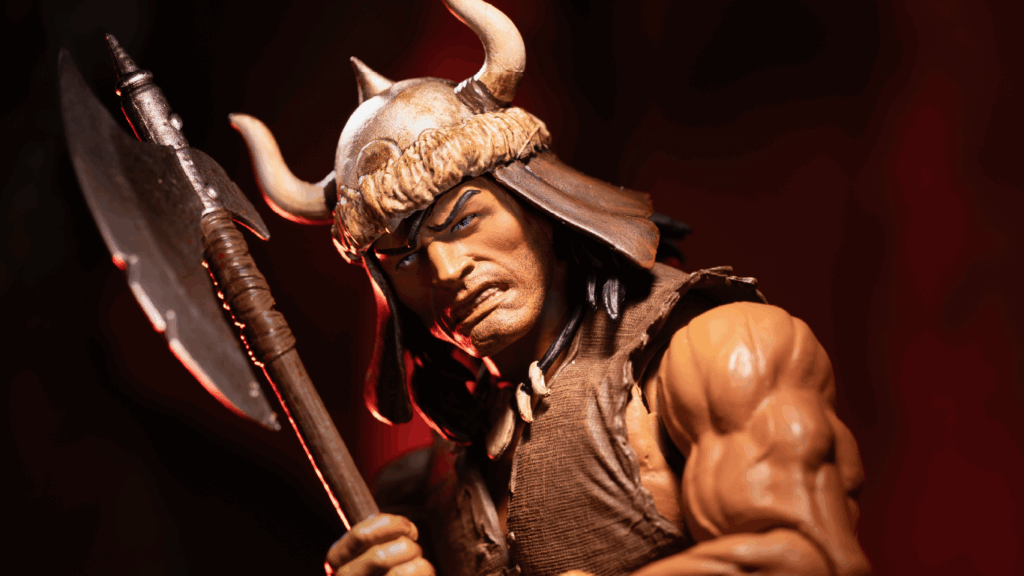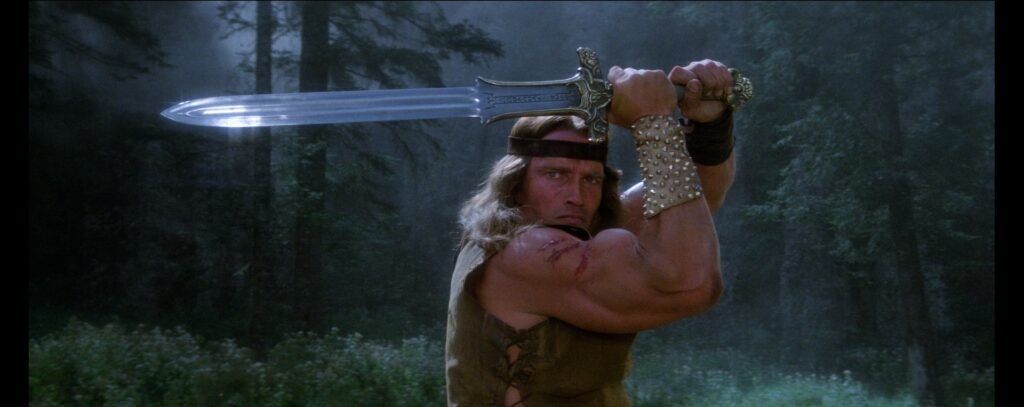
Exploring Conan the Barbarian’s Swords In-Depth
There he stands in our mind’s eye: mighty Conan, his muscled frame silhouetted against a blood-red sky, that distinctive sword raised high.
The Atlantean blade from the 1982 film has become so embedded in our consciousness that many fans assume the Cimmerian always wielded this iconic weapon throughout his adventures.
By Crom, how wrong they are!
Today we cleave through misconception and explore the truth behind the Barbarian’s relationship with his weapons.
The Enduring Legacy of the Swords of the 1982 Conan the Barbarian Film
The 1982 film Conan the Barbarian not only established Arnold Schwarzenegger as an action star but also introduced two of the most recognizable fantasy weapons in cinema history: the Atlantean Sword and the Father’s Sword.
While neither appeared in Robert E. Howard’s original stories, both have become deeply associated with the character in popular culture.
Jody Samson, the sword master and designer for the film, created the Atlantean Sword with such distinctive visual power that it could be identified by silhouette alone. This ancient blade, supposedly forged by ancient Atlanteans and discovered in a tomb, became Conan’s signature weapon throughout the film’s climactic sequences.
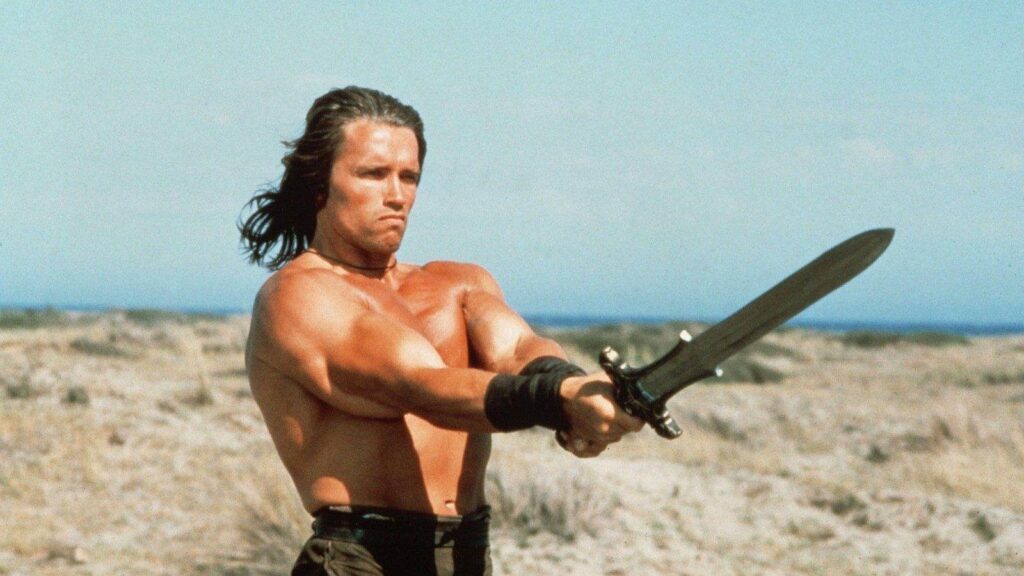
The sword wasn’t based on any historical “Atlantean” design (there isn’t one), but it carried that perfect veneer of mythical authenticity. Sampson’s design has influenced fantasy weapon aesthetics for decades since, appearing in countless video games, tabletop RPGs, and artwork.
Another often discussed weapon from the movie is the Father’s Sword, the blade forged by Conan’s father in the movie’s opening sequence. This weapon carries tremendous emotional significance in the film’s narrative as the only connection Conan has to his slaughtered family. When he finally recovers it from the Witch mid-way through the film, it symbolizes his reclamation of identity and purpose.
The Sword Debate: Which Blade Reigns Supreme?
Among Conan enthusiasts, debates about which sword is superior have raged for decades. The Atlantean Sword, with its mystical origins and ornate design, represents Conan at the height of his power. The Father’s Sword, simpler but rich with personal significance, represents his authentic roots and driving purpose.
Many comic artists who grew up with the film have incorporated subtle homages to both weapons in their work, even when not directly adapting the movie. Some prefer the raw, emotional resonance of the Father’s Sword, while others are drawn to the mythic quality of the Atlantean blade.
What’s undeniable is that both swords, despite having no basis in Howard’s original tales, have become inextricably linked with the character in visual media. Even when artists and writers attempt to return to Howard’s vision of a weapon-agnostic Conan, the distinctive silhouettes of these film blades continue to influence how the character is depicted.
The true power of these designs lies in how perfectly they married with Schwarzenegger’s physicality. In his massive hands, both weapons looked simultaneously deadly and believable – and savage.
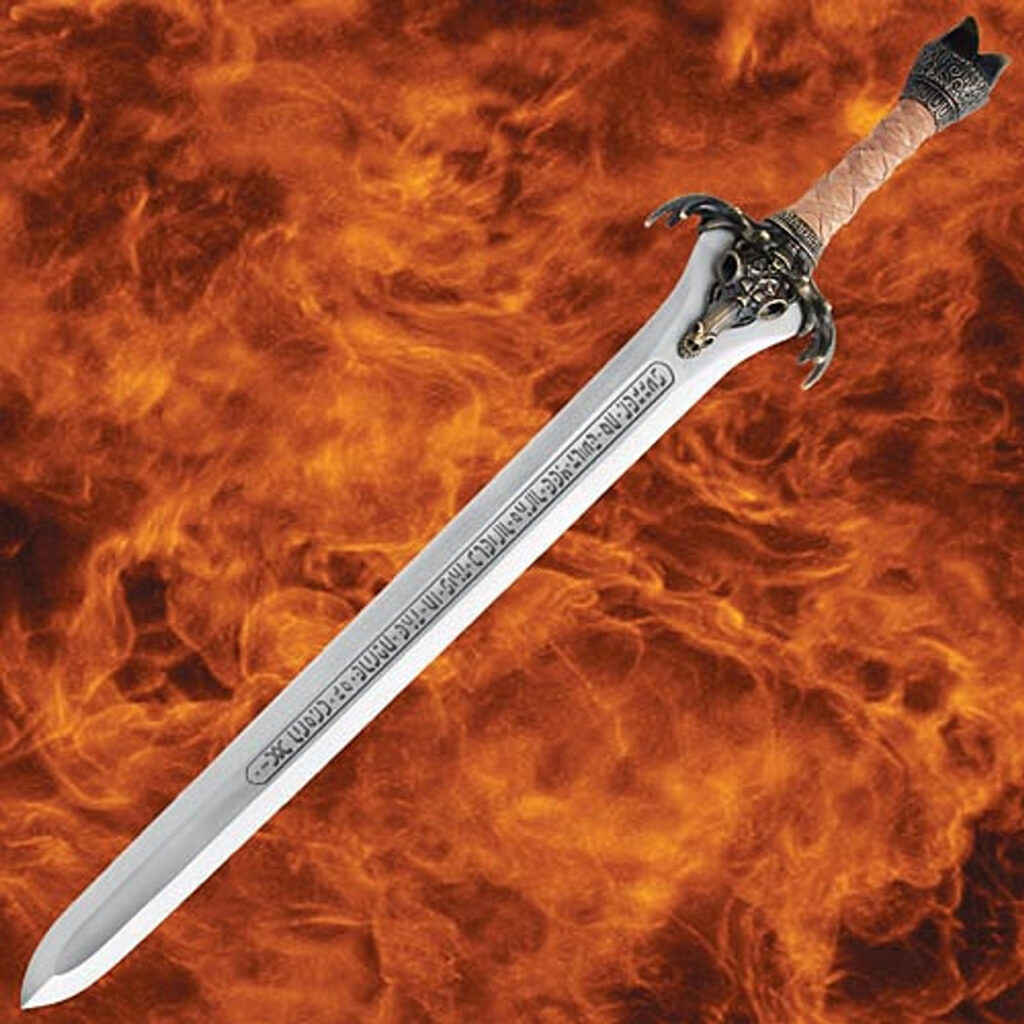
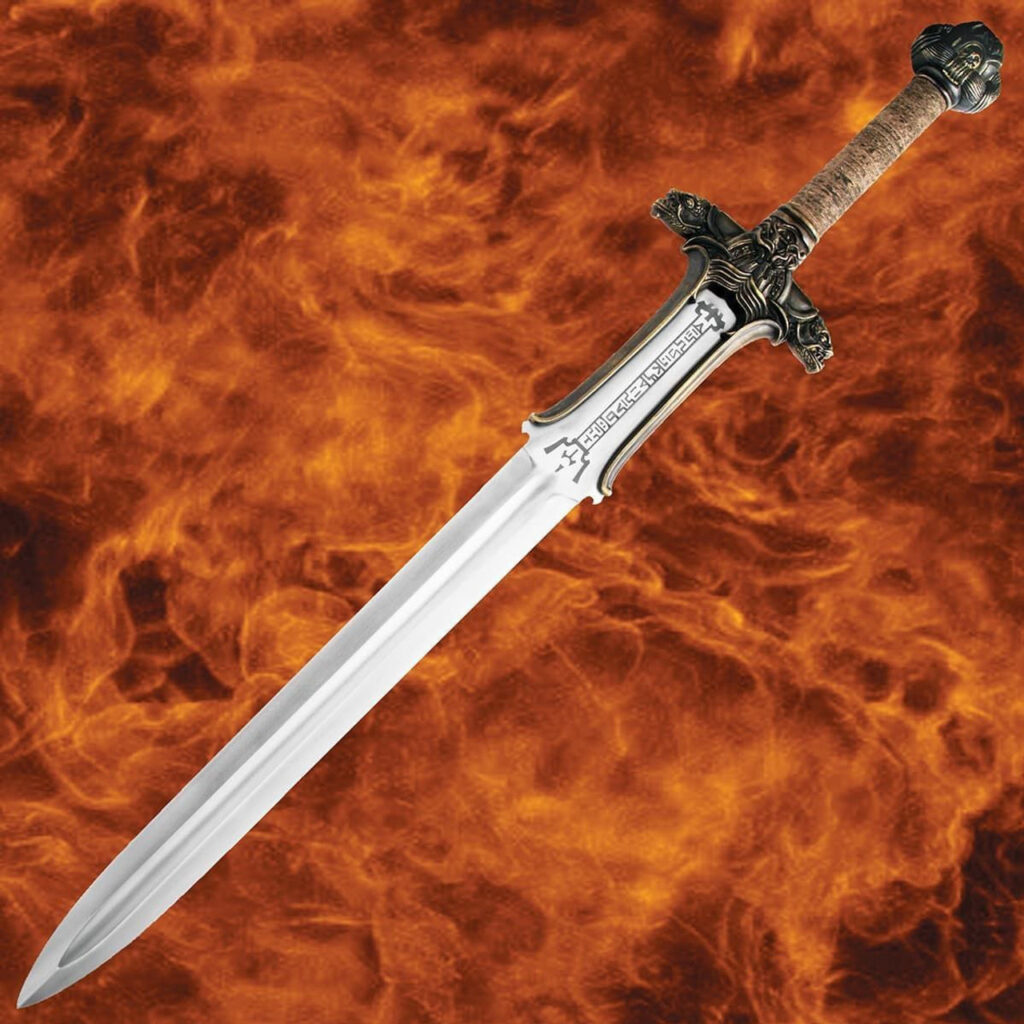
Conan’s Swords in Howard’s Original Tales
In Robert E. Howard’s original stories, our barbaric friend was far less sentimental about his killing tools. By far, Conan’s weapon of choice was indeed a sword – but it was always a different sword, depending on where he was and where he’d come from.
Scimitars, cutlasses, and even tulwars made regular appearances in his blood-soaked hands. If we were to guess at any preference, we might assume Conan favored curved blades over straighter edges (perhaps a result of his extensive time as a pirate and his interactions with middle-eastern inspired cultures).
But even this is speculation.
The type of sword changed seemingly from story to story, with no clear favorite emerging. This says something interesting about Howard’s Conan: he is a pragmatic survivor, not a mystic bound to a legendary blade.
Conan’s Swords from the Marvel Run of the 1970s through 2023
When Marvel brought Conan to comics in the 1970s, they made a choice that would shape fans’ perceptions for decades: they gave him a consistent-looking sword.
While we can’t be certain of the editorial reasoning, it likely came down to practical considerations. As part of Marvel’s licensing catalog, Conan needed a blade that could be easily recreated regardless of who was drawing him or who purchased the license. There weren’t any magical swords in Howard’s original tales anyway (we can quibble over “The Phoenix on the Sword”), so there was no narrative need for a fancy, distinctive weapon.
After all, in Conan’s world, a sword is often just going to end up broken off in someone’s neck, abandoned on a battlefield, or used as an impromptu tool. The consistent look was almost certainly about creating a copyrightable image, much like the approach taken with superheroes.
Despite the apparent consistency of Conan’s blade throughout the Marvel era, different artists found ways to put their own stamp on his weaponry while maintaining the necessary visual continuity.
Barry Windsor-Smith’s lankier, broad-shouldered Conan carried slimmer weapons to match. But Big John Buscema, who drew Conan prolifically, depicted a wide, thickly-muscled Cimmerian with appropriately broader, more substantial blades. His Conan didn’t need elaborate weapon detailing because his sense of action and choreography were the real stars on the page.
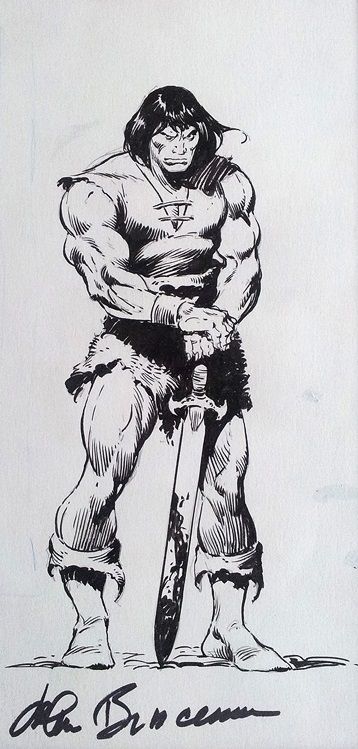
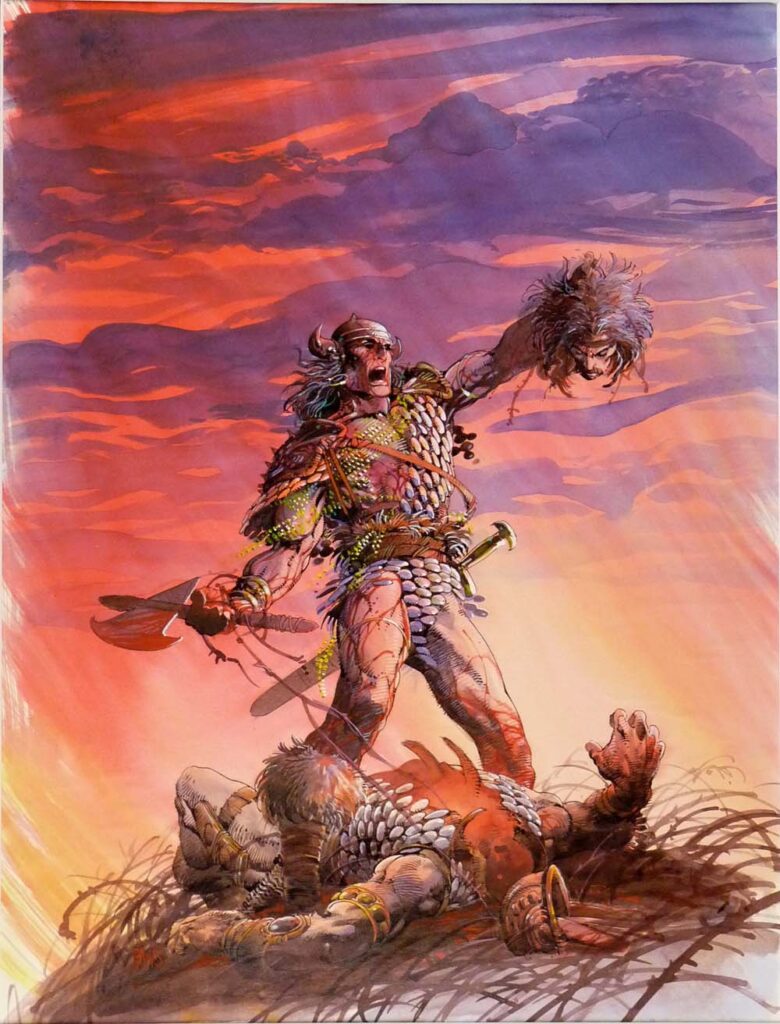
When Dark Horse Comics acquired the license in 2003, they took a fresh approach with artists like Cary Nord and Tomas Giorello, who deliberately distanced themselves from the iconic movie imagery and returned to Howard’s original vision. Their Conan wielded practical, varied weapons that changed based on his circumstances rather than adhering to any signature design. Nord’s kinetic, brutal art paired perfectly with writer Kurt Busiek’s authentic interpretation, while Giorello (who worked with writer Tim Truman) developed a reputation for bringing a classical, painterly approach to the Cimmerian’s adventures. Both artists emphasized Conan’s adaptability over any signature weapon.
Marvel briefly reclaimed the license from 2018-2022, with Mahmud A. Asrar’s artwork under Jason Aaron’s writing occasionally making subtle visual nods to the film’s sword while still maintaining Howard’s weapon-agnostic approach.
That, of course, leads us to today.
The Pictish Blade of Jim Zub
In the current Conan run by Jim Zub, we’re seeing something fascinating unfold with the introduction of the Pictish blade, which was originally the spear of Brule from Howard’s deeper mythology.
Zub is deliberately playing with connections across the broader Howardverse, using this transformed weapon as a magical thread to tie various elements together. We’ve already witnessed Conan using it to communicate with guiding spirits from the past and even travel through time.
In a brilliant nod to the film that introduced many fans to the character, Zub has even incorporated the iconic Atlantean sword from the 1982 movie into his stories. During a time-travel adventure where Conan journeys back to the Thurian Age—the ancient era of King Kull when Atlantis still existed as a mighty civilization—the legendary blade makes a perfect contextual appearance. In this primordial time, thousands of years before Conan’s own Hyborian Age, the sword is wielded not by Conan but by the sinister Thulsa Doom. This clever connection acknowledges the cultural impact of the film’s weapon while maintaining Howard’s vision of Conan as a warrior defined by his prowess rather than his weapons, all while providing a logical origin for the “Atlantean” blade that would be impossible in Conan’s own time.
While still not making Conan dependent on a signature weapon, this creative choice acknowledges the value of a distinctive blade for contemporary storytelling while opening doors to explore the wider Hyborian Age.
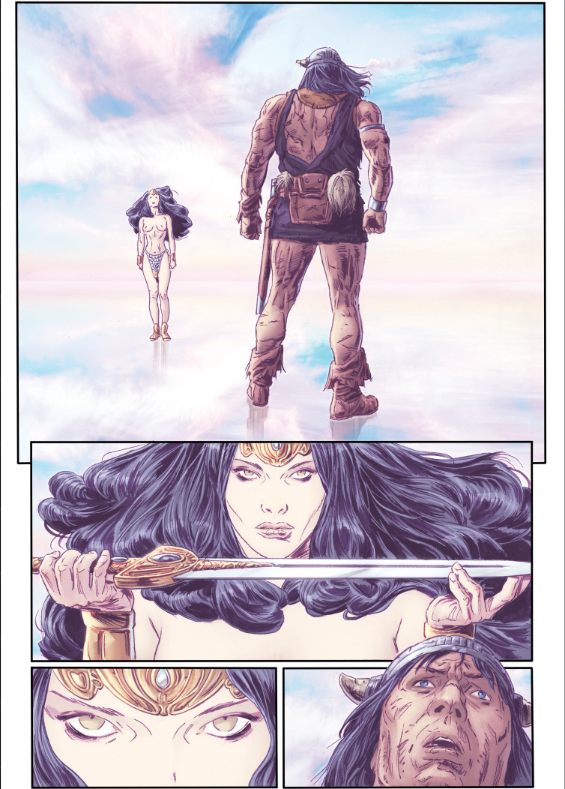

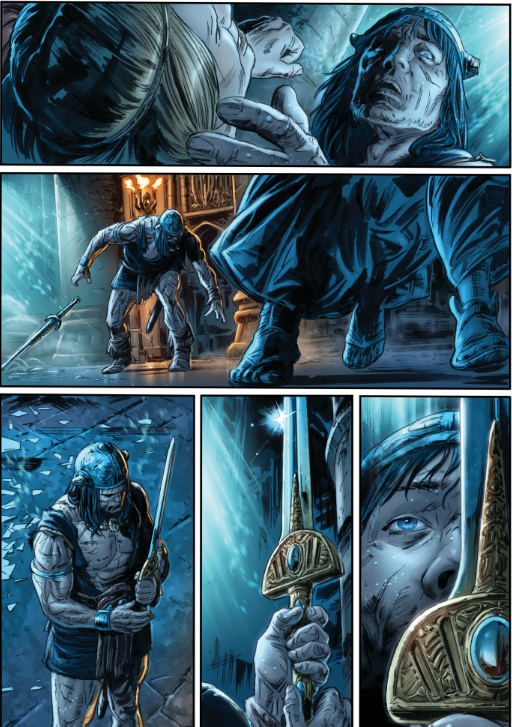
What other possibilities Zub has planned for this mystical tool remain to be seen, but the potential is as vast as the Western Ocean.
The Warrior, Not The Weapon
What truly separates Conan from other fantasy icons is precisely his lack of attachment to any particular weapon. Unlike Elric with his soul-drinking Stormbringer or Arthur with his kingdom-defining Excalibur, Conan’s identity is never tied to the tool in his hand.
Those other heroes are in many ways defined by their legendary blades. Their weapons bestow power upon them or mark them as “chosen ones.” Conan stands apart. He is the chosen one not through fate or magical selection, but simply because he’s the most dangerous man in any room, regardless of what he’s holding.
Perhaps the most revealing aspect of Conan’s relationship with weapons is his willingness – no, eagerness – to improvise when the situation demands it. Beer steins, curtain rods, and chairs have all served as impromptu instruments of destruction in the Cimmerian’s massive hands. And let’s not forget his most reliable weapons: those same hands, capable of snapping a bull’s neck or tearing out a vulture’s throat with his teeth. (The man really doesn’t seem to like necks, does he?)
This adaptability further cements Conan’s status as the ultimate survivor. Unlike heroes whose power diminishes when separated from their magical weapons, Conan remains lethal in any environment, with or without conventional arms.
By Crom! The Truth Revealed
As we’ve shattered myths and cleaved through misconceptions, the truth stands bloody but unbowed: Conan’s relationship with his weapons is precisely what makes him unique in the pantheon of fantasy heroes.
Perhaps that’s why we love him. In a genre often dominated by chosen ones with magical destinies and enchanted weapons, Conan stands as a refreshing counterpoint as a man who forges his own destiny with whatever tools happen to be at hand.
Ready to get a piece of the action for yourself?
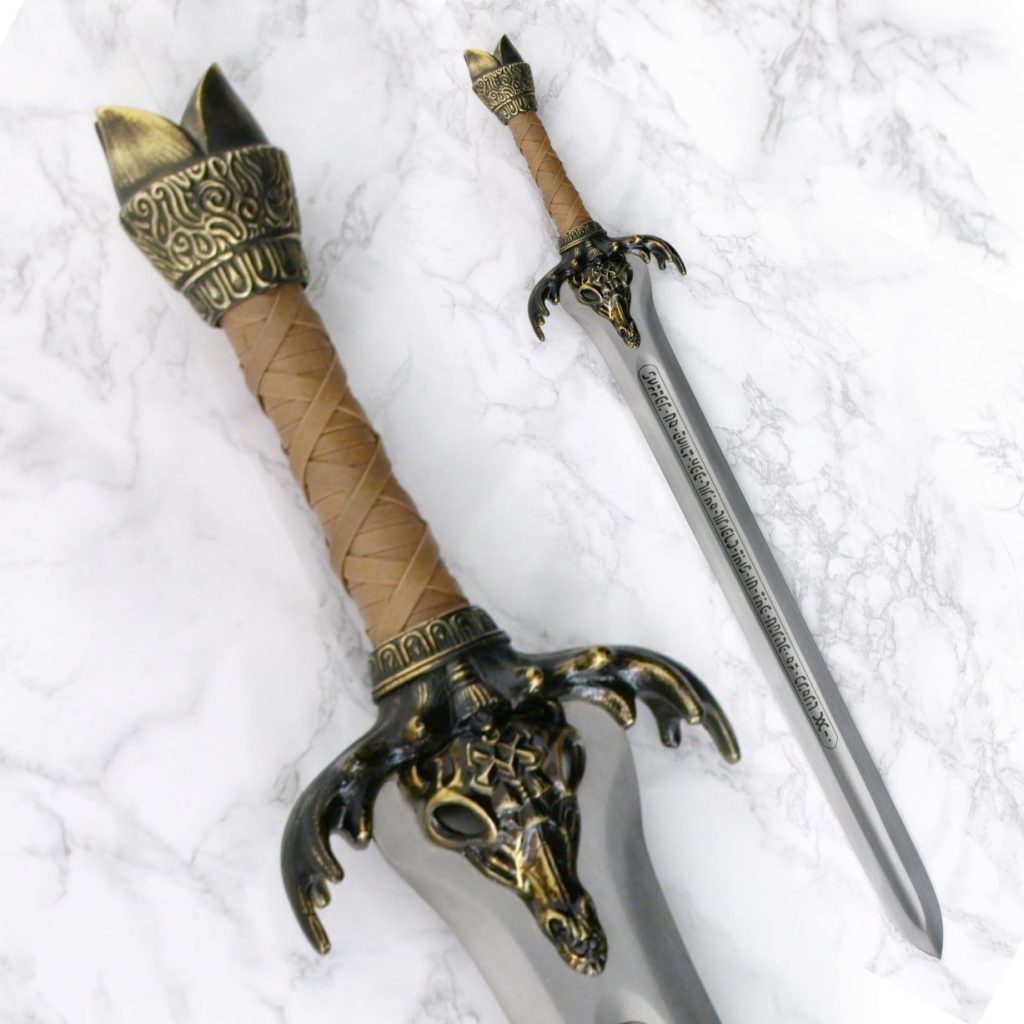

Lo Terry
In his effort to help Heroic Signatures tell legendary stories, Lo Terry does a lot. Sometimes, that means spearheading an innovative, AI-driven tavern adventure. In others it means writing words in the voice of a mischievous merchant for people to chuckle at. It's a fun time.

